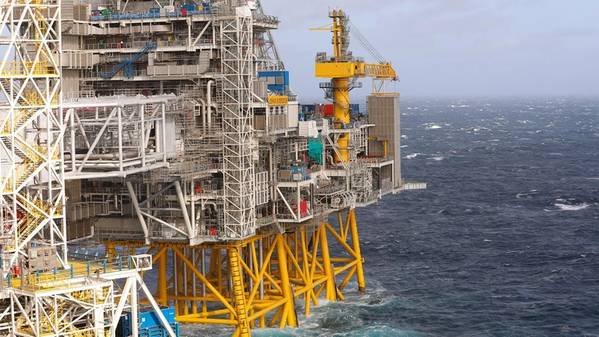
Norway, Western Europe's largest oil producer, will slash its output from June to December of 2020, the oil and energy ministry said on Wednesday, the first time in 18 years it has joined other major producers to shore up prices.
"We will cut Norwegian production by 250,000 barrels per day (bpd) in June and by 134,000 barrels per day in the second half of 2020. In addition, the start-up of production of several fields will be delayed until 2021," Oil Minister Tina Bru said.
"Consequently, the total Norwegian production in December 2020 will be 300,000 barrels less per day than originally planned by the companies. The regulation will cease by the end of the year," she added.
Oilfields that were supposed to start output later this year, but which must now wait until 2021, represent 166,000 bpd of the overall 300,000 bpd December cuts, the ministry added.
The Norwegian cuts are made from a reference point of 1.859 million bpd, and the upper limit of output in June will thus be 1.609 million bpd, while the upper limit in the second half of the year will be 1.725 million bpd, the ministry said.
The OPEC+ group, comprising the Organization of the Petroleum Exporting Countries, Russia and other countries, agreed earlier this month to cut output by 9.7 million bpd in May and June, or about 10% of global supply.
The deal also called for producers outside the OPEC+, such as the United States, Canada, Brazil, and Norway, to cut a further 5 million bpd.
Norway's output and exports of natural gas will not be affected.
"The cut will include oil fields on the Norwegian Continental Shelf and be fairly distributed between the fields and thereby between companies," Bru said in a statement.
She had previously praised the OPEC+ agreement, calling it an important contribution to the stability of the oil market over the coming year.
Norway has restrained its oil output several times in the past, including from 1986 to 1990 and again in 1998-2000 and in the first half of 2002, always in tandem with others when prices fell.
"In the current unprecedented situation cuts in oil production introduced by the government will contribute to a faster stabilisation of the oil market compared to letting the rebalancing take place only through the market mechanism," the oil ministry said.
The country's annual average crude oil production peaked at 3.1 million bpd in 2000 before slipping to a 30-year low of 1.4 million bpd in 2019.
Norway's crude output stood at 1.75 million bpd in February, up 26% from a year ago. Including condensate and natural gas liquids (NGL), the oil liquids production was 2.1 million bpd, corresponding to around 2% of global output.
The government forecasts a rebound for crude to above 2 million bpd by 2024 however, not counting NGL or condensate, as large new fields come on stream, and Norway has also seen a surge in gas production over the last two decades.
(Editing by Gwladys Fouche)